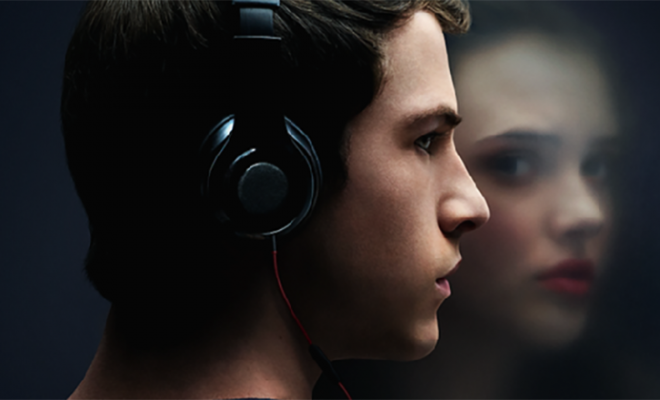
Current Events
How to talk to your teens about 13 Reasons Why
Katherine is a Health and Psychology teacher in Melbourne. We asked for her insight into the Netflix series 13 Reasons Why.
** This post includes spoilers for the end of the series**
There has been both anger and praise for Netflix’s highly publicized new teenage drama 13 Reasons Why.
This television drama centres around Hannah Baker who, prior to taking her own life, documents her reasons for doing so on cassette tapes.
As a high school Health and Psychology teacher my first attempt at watching the series ended nine minutes into the first episode as I found the whole concept distasteful. However, after returning to school from the Easter break and hearing my students discussing the series in detail, I thought it irresponsible for me to not know exactly happened as the series played out, and it really concerned me.
The fact is, by now the majority of our teenagers have already watched the series. Media outlets keep talking about the harm of this, but few are talking about what we do now that it’s out there. We need to see it as an opportunity to discuss the issue and bust the myths that come with the series. We need to debrief with our teens as they most likely don’t have the maturity to do so themselves.
Where to start
Media guidelines in Australia discourage detailed reporting of suicide deaths as there is strong evidence to suggest that reporting the specifics increases ‘copycat’ behaviour. If suicide is reported in an Australian news program or subtly depicted on our television screens, suggested helplines are listed immediately after. It’s for this reason, I have included them at the end of this post also.
The gross negligence of 13 Reasons Why is that it not only graphically depicts a teenagers death but then has no follow up. It is important to discuss this with teens and how they feel about it. As an adult I was shocked, in tears and had to look away.
Give them a safe space to talk
Now I am sure that teens are discussing this amongst themselves, but it is so important that they can discuss this openly with an adult in a safe space. This will give them the opportunity and the space to discuss how it made them feel and if it brought anything up for them. If you also watched the scene you may want to say how you felt too, this could help them to open up. You might find they are more honest with you than they are with their friends as there will generally be less teenage bravado.
Stress the importance of Hannah’s trauma and lack of consent
The other graphically confronting scene in the series is the rape of Hannah by one of her class mates. In Beyond the Reasons, the 25 minute special designed as a debrief to the show, produces state that it was important to show the impact of this act on the victim and that the camera stayed on Hannah’s face during the rape for longer than was comfortable.
Again, as an adult I found this scene distressing and difficult to watch. Young viewers caught off-guard would have a difficult time processing this act. In terms of discussion points, it’s important to talk about Hannah’s lack of resistance to the rape. This is a common reaction from victims of trauma where the mind and body have a disconnect which acts as a protective mechanism. For young viewers who don’t have an understanding of this, it could be viewed as Hannah not fighting back and ‘letting it happen’.
This also brings up issues around consent, which also needs to be better understood by teens. For me, this is one of the most important scenes to debrief with teens to ensure that they have a clear understanding of both consent and a person’s physical and mental reaction to trauma.
Note Hannah’s awareness
Hannah has clear knowledge of why she is taking her own life and has the capacity to document this. Each side of the tape places the blame for Hannah’s death on different people in her life. This does highlight to teens the danger of an offhand comment or a nasty note, but it could also cause some significant anxiety for teens.
People who have had someone close take their own life are always left questioning and wondering. They will often put the blame on themselves without the help of a cassette tape from the deceased. It is also not an accurate portrayal of the state of mind of someone who is suicidal. As it is highly unlikely that someone in this position would have the clarity of mind to articulate and document everything that has gone wrong in their lives to lead them to this point.
Explain the mental health aspect
Further to this, it takes away from the fact that people in this position have a medical illness that means that their cognitive functioning is not working at its full capacity. This part of the show is vital to discuss with teens, as they need to recognise that actions do have consequences and they should be more aware of how they interact with each other. But they also need to recognise mental illness as a medical issue that cannot be fixed with a kind word and an apology.
This T.V series has the potential to linger in popular culture. Our teens need to be given the space to discuss anything that may be bothering them in regards to both the series and their own lives. Most importantly point out to your teens that you are always there to help and listen.
I will be spending time debriefing with my Year 11’s in Health class this week as I think it is vital that teens are given the opportunity and space to discuss such a big issue with an adult. However this would be so much more effective coming from a parent. The content is out there, for the sake of our youth, we can’t ignore it we need to help them process it.
If you haven’t watched the series but intend on talking about it with the teen in your life, I would recommend looking up a series synopsis to give you a better idea prior to the discussion. If you just want to watch some key episodes I would recommend 1-3 and then the final 2 episodes.
For further information or help try: Headspace, Beyond Blue and Lifeline (13 11 1
Katherine has written for us before! Click here to read about her time volunteering in Uganda.
Keep up up-to-date with daily posts and upcoming news by following The Merry Go Round on Facebook, Instagram, Twitter or Pinterest
Comments
Katherine is a secondary school Psychology and Health teacher. She is passionate about education and believes every child has the right to an education. When she is not busy teaching, she is watching Disney movies and hanging with her cat Watson.
























0 comments